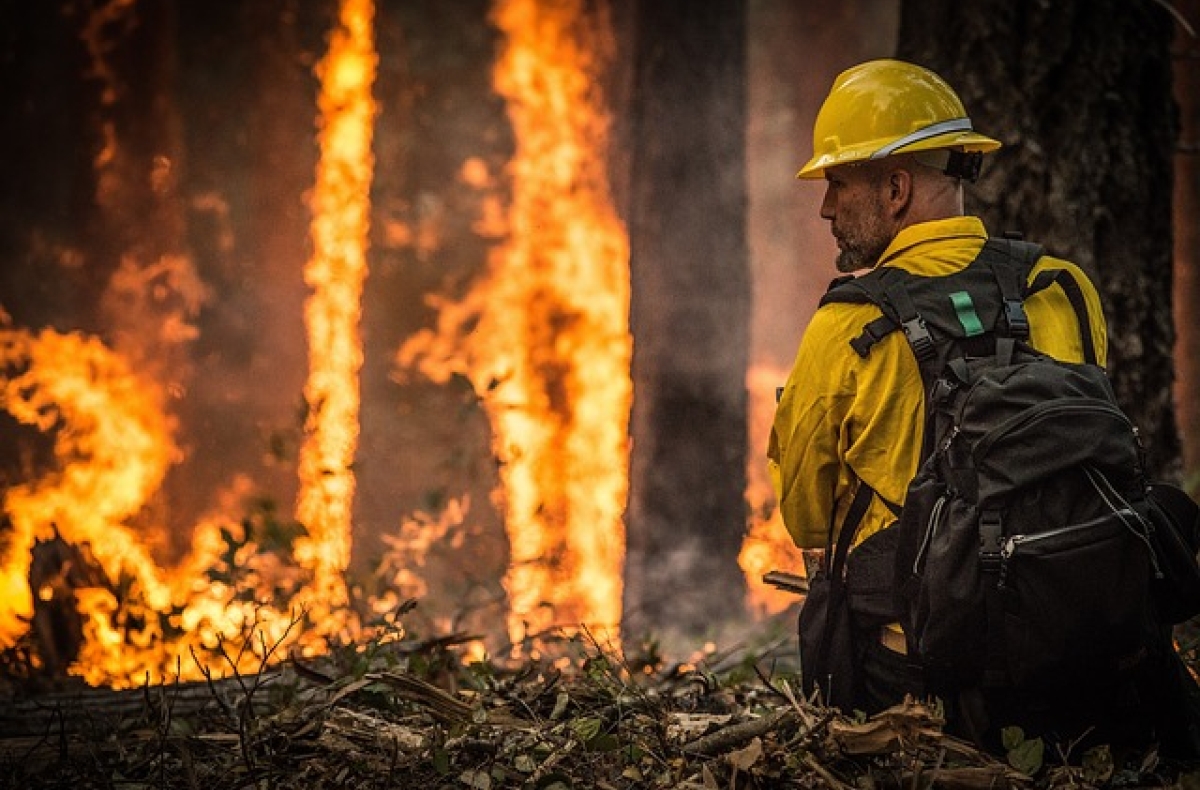The Woods Institute is now part of the Stanford Doerr School of Sustainability
Fire Management and COVID-19

Image by 272447/Pixabay
COVID-19 quarantines and ongoing public health emergency responses are likely to hamper firefighters’ plans to clear brush now as well as to actually fight fires later in the season. Firefighters are now on the front lines of the public health crisis at a time when they would normally be working in their localities to inspect properties and request that homeowners undertake vegetation removal before fire season begins in earnest. The same scenario applies to natural resource managers and groups like the California Conservation Corps who are being deployed to serve on COVID-19 crisis management activities instead of working to reduce forest fuel loads.
These fire personnel work diversions, along with concerns about increased drought conditions across the state, are leading to uncertainty about how fire season will actually be managed. Also worrying in the age of pandemic is that firefighters rely heavily upon mutual aid agreements that allow them to share their resources during large wildfire events. If travel is restricted across the country and around the globe because of COVID-19 or another pandemic, how will fire agencies handle catastrophic events like the kind we've seen recently in California and Australia where mutual aid was vital to containment? Hopefully, our current economic outlook won’t hamper the state's ability to fund or our agencies’ to administer wildfire activities this year. Stanford researchers have identified methods to deal with fire management including prescribed burns and have developed a new biosafe gel retardant both of which could prove useful in proactively addressing prevention issues this season.
Contact Information
Christine H. Black
Associate Director, Communications
650.725.8240
ChristineBlack@stanford.edu
Devon Ryan
Communications Manager
650.497.0444
devonr@stanford.edu
Rob Jordan
Editor / Senior Writer
650.721.1881
rjordan@stanford.edu


